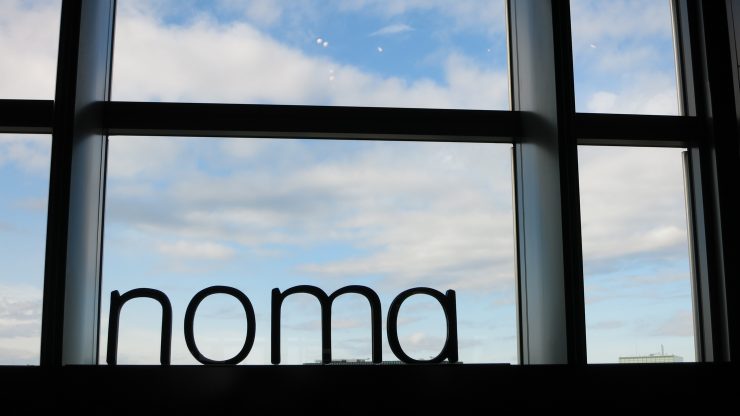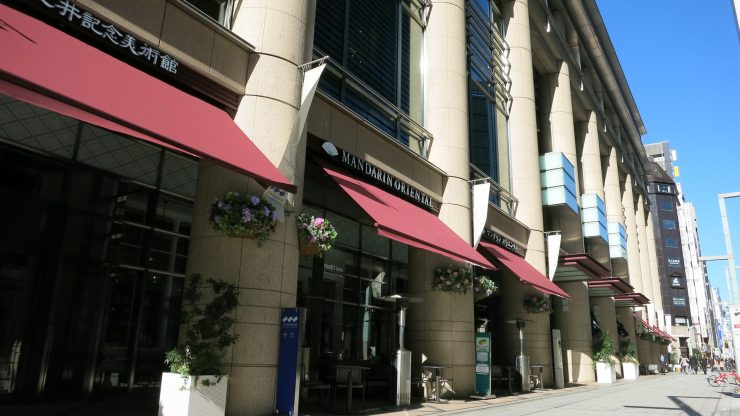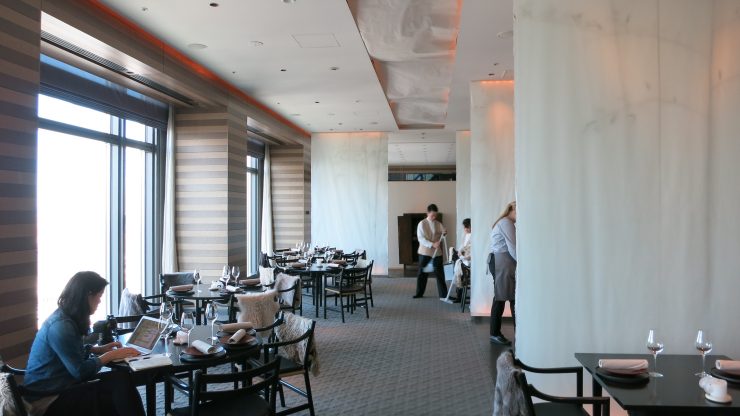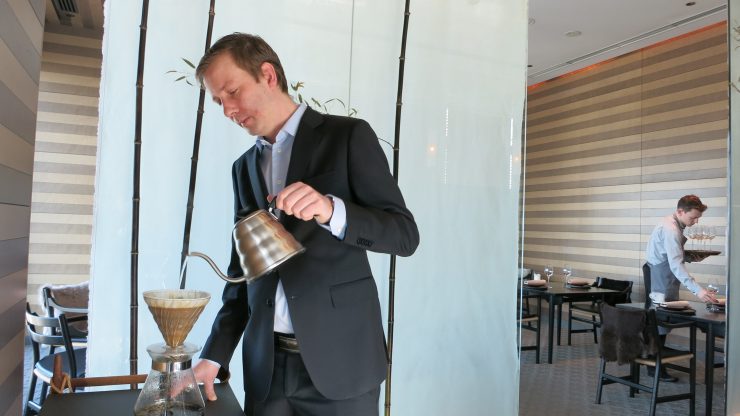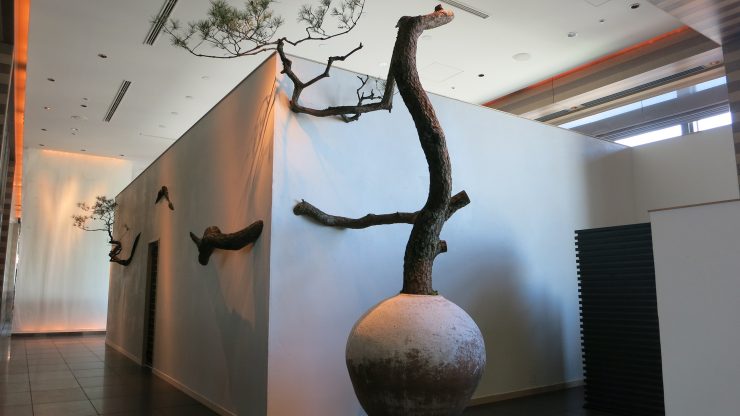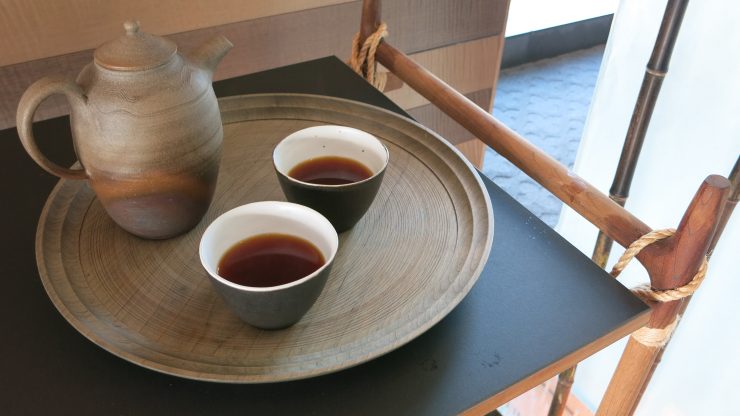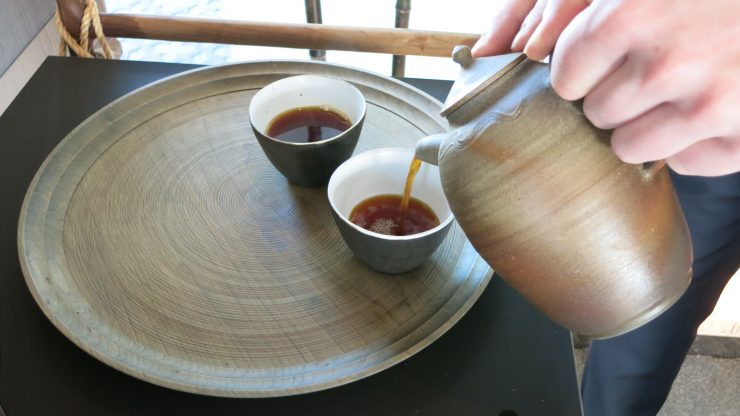At 9:30 a.m., Noma Tokyo is a slow pulse of activity—in the kitchen, punk rock blasts from a mini-speaker while ingredients are prepared, glasses are shined, and hand towels are rolled. In the quieter open space of the dining rooms, tables are set for the day’s lunch, while light chatter wafts through the air. Occasionally René Redzepi, head chef and co-owner, zips in and around the proceedings—he checks one spot, chats with some people, disappears momentarily, then pops up again somewhere else.
In this unusual trick for a restaurant, January 9th saw Copenhagen’s world-renowned Noma move into a temporary new home on the 37th floor of the Mandarin Oriental Hotel in Tokyo—a carefully researched, pop-up restaurant that will last until February 14th. The entire Noma staff made the trip across the sea from Copenhagen, with the aim of sharing their unique approach to locally sourced ingredients. The result? A one-of-a-kind dining experience unique to Japan.
Amongst the hustle and bustle of morning preparations, a particular coffee is carefully ground, weighed, and brewed―this same coffee will later surprise and refresh diners visiting for lunch, but for the moment, it is fuel and fire for staff members, and a wake-up call to the busy day ahead. This is a coffee that, though it may appear at first glance ordinary, is as important to the Noma experience as the ant-covered shrimp and the raw shijimi clam tarts.
“Coffee isn’t just something that you drink,” says head sommelier Mads Kleppe, the architect of Noma’s trend-setting Copenhagen coffee service, as he begins brewing a fresh pot of coffee, “it’s a complete part of the experience, and we really wanted to bring our coffee service up to the level of everything else that we do. That goes for both at home, and in Tokyo.”
The coffee of choice—Duromina, Ethiopia, courtesy of Tim Wendelboe—appealed to Noma with its elegant, fruity acidity. It’s also an heirloom varietal, a detail that didn’t slip Kleppe’s attention during the selection process. “We’re trying to stay as natural as possible,” he says, “these coffees are not only unique, they’re a very nice fit with what we’re doing here.”
Wendelboe himself dropped by a few days before the official opening—a whirlwind tour of coffee service set-up, quality control, and guest seminars. Kleppe tells me the water was tested well before the team arrived in Tokyo, and they were pleasantly surprised to find it easier to work with than what they have back home in Copenhagen—it’s softer, and required only a carbon filter.
The overwhelming opinion among staff, in fact, is that the coffee tastes better here in Tokyo than it does in Copenhagen.
Overall, Kleppe is happy with the coffee service, but a single sigh escapes his lips when asked about the grinder. Watching the coffee brew into the serving pot, he shakes his head sadly. “We really wanted the EK43” he says, “but it just wasn’t possible.”
The freshly brewed coffee is transferred to an elegantly designed ceramic pot and then poured into delicately crafted cups. These, Kleppe tells me, along with the cutlery, the trays, the plates, and the glassware, were specially sourced to further enhance the unique dining experience here at Noma Tokyo.
Noma has, since inception, been about understanding, exploring, and sharing tastes through quality ingredients, careful preparation, and creative presentation. It’s this very concept that makes the Tokyo pop-up such an exciting venture for the team—it’s a chance to share their world-renowned creativity with a whole host of new, refreshing ingredients.
And coffee lovers can rest assured, when they sit down and stare out at the vast cityscape of Tokyo, that it’s not just the food and wine that makes the Noma experience interesting―they also serve a very fine cup of coffee.
Noma at Mandarin Oriental Tokyo is located at 2-1-1 Nihonbashi Muromachi, Chuo-ku, Tokyo, 103-8328.
Hengtee Lim is a Sprudge.com staff writer based in Tokyo. Read more Hengtee Lim on Sprudge.
The post Inside The Coffee Service At Noma Tokyo appeared first on Sprudge.


